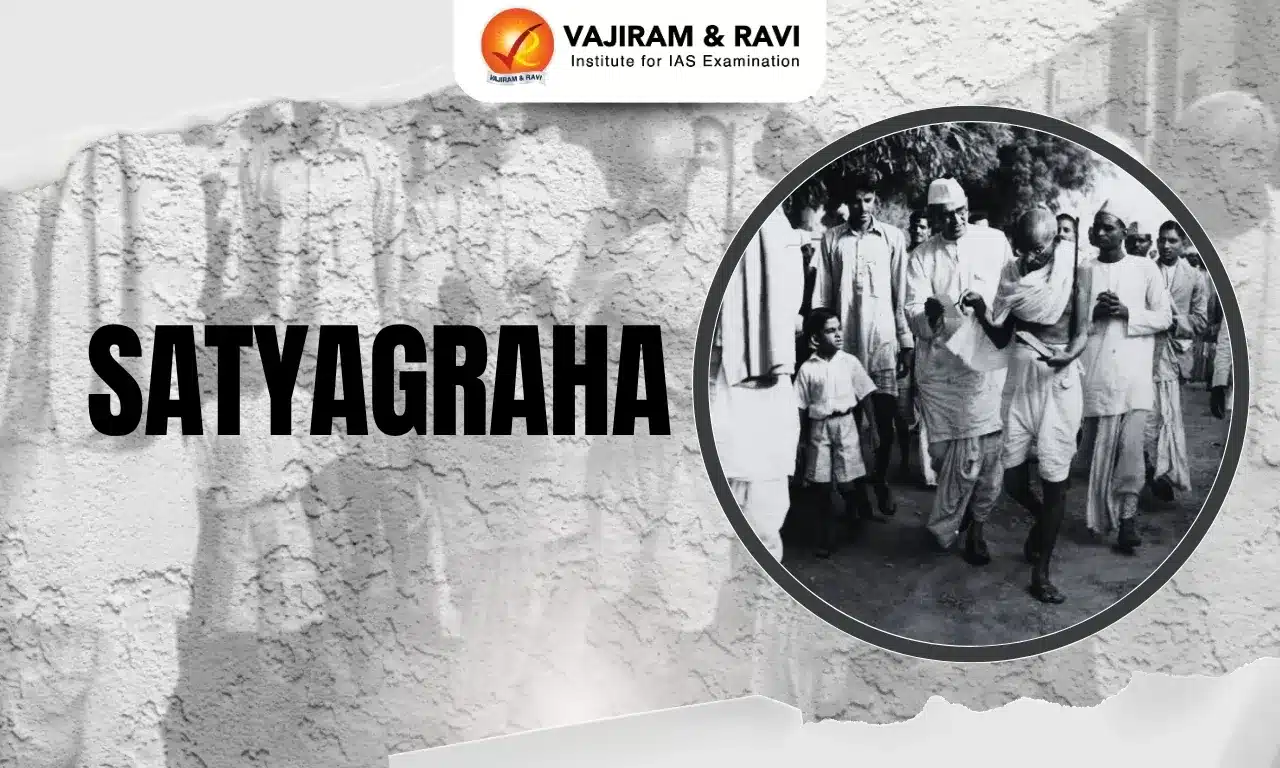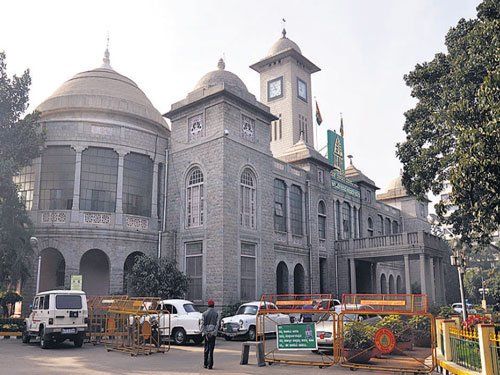The term "Satyagraha," embodies the idea of unwavering commitment to truth in the face of adversity. It is a powerful philosophy of non-violent resistance that emerged from Mahatma Gandhi's experiences in South Africa during the early 20th century. Gandhi formulated this concept to combat the injustice and oppression faced by the Indian community.
Central to this philosophy are principles of non-violence, integrity, and the courage to confront injustice without hatred. Through significant movements like the Champaran and Salt Satyagraha, Gandhi harnessed Satyagraha as a method to mobilize mass protests against colonial oppression.
What is Satyagraha?
The term "Satyagraha" is derived from two Sanskrit words: "Satya," meaning truth, and "Agraha," meaning firmness or insistence. Thus, Satyagraha translates to "insistence on truth". This concept emphasizes the moral and ethical dimensions of resistance, advocating that one must confront injustice with the truth while remaining steadfast and non-violent. Satyagraha is not merely a strategy; it embodies a philosophy that encourages individuals to uphold justice and righteousness even in the face of oppression.
Satyagraha Origin
The origins of Satyagraha can be traced back to Gandhi's experiences in South Africa during the early 20th century, where he fought against racial discrimination faced by the Indian community. Influenced by various thinkers, including Henry David Thoreau's concept of civil disobedience and Leo Tolstoy's advocacy for non-violence, Gandhi developed Satyagraha as a method to resist oppression through non-violent means.
- One significant event that catalyzed the development of this philosophy was the 1906 legislation requiring Indians to carry registration certificates with their fingerprints at all times.
- In response to this discriminatory measure, Gandhi established the Passive Resistance Association to lead a campaign against the law. This marked the birth of Satyagraha.
Satyagraha Principles
Central to this philosophy of Satyagraha is the belief that one must confront injustice with unwavering commitment while adhering to values of non-violence and integrity. Moreover, a true practitioner must ensure that their thoughts align with their actions. Its basic principles are as follows:
- Commitment to Truth and Non-violence: A satyagrahi (someone who practices satyagraha)is expected to resist what they perceive as wrong while consistently adhering to truth, non-violence, and fearlessness in their actions.
- Withdrawal of Cooperation and Boycott: A satyagrahi operates on the principles of withdrawing cooperation from unjust systems and boycotting oppressive entities as a means of protest.
- Methods of Satyagraha: Common methods of Satyagraha include non-payment of taxes and rejecting honours or positions of authority.
- Acceptance of Suffering: A satyagrahi must be willing to endure suffering in their fight against injustice, seeing this suffering as an expression of their love for truth.
- Absence of Hatred: Even while opposing wrongdoers, a true satyagrahi maintains no ill will toward them. Hatred is seen as contrary to the nature of Satyagraha.
- Resistance to Evil: A genuine satyagrahi refuses to submit to evil, regardless of the consequences they may face.
- Courage and Strength: Practicing Satyagraha requires bravery and strength; it is not a path for the weak or cowardly.
Satyagraha Movements by Gandhi
Mahatma Gandhi's application of Satyagraha played a crucial role in mobilizing mass movements against injustice and oppression in India. His approach empowered individuals to stand up against tyranny through non-violent resistance. Some of the popular movements where Gandhi used Satyagraha as a method are as follows:
- Champaran Satyagraha (1917): The Champaran satyagraha, the first Civil Disobedience movement in India, was initiated in response to the exploitation of indigo farmers by British planters. Gandhi organized a successful campaign, leading to the abolition of oppressive practices and earning the rights of farmers.
- Ahmedabad Mill Strike (1918): Gandhi advocated for higher wages for textile workers in Ahmedabad and urged them to remain non-violent during the strike. When negotiations with mill owners stalled, he undertook his first fast unto death.
- This action pressured the owners to agree to a tribunal, which awarded the workers a 35 percent wage increase.
- Kheda Satyagraha (1918): During the Kheda Satyagraha, farmers faced hardships due to crop failures and were unable to pay taxes. Gandhi led a non-violent protest, resulting in the suspension of tax collection and relief for the affected farmers.
- Rowlatt Satyagraha (1919): Gandhi strongly opposed the provisions of the Rowlatt Act, and referred to it as a "Black Law”. On April 6, 1919, he launched a nationwide non-violent protest against this legislation.
- Salt Satyagraha (1930): In a bold act of civil disobedience, Gandhi led a 240-mile march from Sabarmati Ashram to Dandi, where he and his followers produced salt in defiance of British salt laws.
Satyagraha Impacts
The Satyagraha movements led by Gandhi had profound and lasting impacts on the Indian independence struggle and the broader context of civil rights movements globally. The principles of Satyagraha inspired various civil rights movements worldwide, including the American Civil Rights Movement led by Martin Luther King Jr. and the Anti-Apartheid Struggle in South Africa led by Nelson Mandela.
The legacy of Satyagraha continues to resonate today, serving as a framework for peaceful protests and movements for justice and equality globally.
| Other Related Posts | |
| Mahatma Gandhi's Movements | Ahmedabad Mill Strike |
| Satyagraha | Kheda Satyagraha |
| Champaran Satyagraha | Vaikom Satyagraha |
Last updated on December, 2025
→ Check out the latest UPSC Syllabus 2026 here.
→ Join Vajiram & Ravi’s Interview Guidance Programme for expert help to crack your final UPSC stage.
→ UPSC Mains Result 2025 is now out.
→ UPSC Notification 2026 is scheduled to be released on January 14, 2026.
→ UPSC Calendar 2026 is released on 15th May, 2025.
→ The UPSC Vacancy 2025 were released 1129, out of which 979 were for UPSC CSE and remaining 150 are for UPSC IFoS.
→ UPSC Prelims 2026 will be conducted on 24th May, 2026 & UPSC Mains 2026 will be conducted on 21st August 2026.
→ The UPSC Selection Process is of 3 stages-Prelims, Mains and Interview.
→ UPSC Result 2024 is released with latest UPSC Marksheet 2024. Check Now!
→ UPSC Prelims Result 2025 is out now for the CSE held on 25 May 2025.
→ UPSC Toppers List 2024 is released now. Shakti Dubey is UPSC AIR 1 2024 Topper.
→ UPSC Prelims Question Paper 2025 and Unofficial Prelims Answer Key 2025 are available now.
→ UPSC Mains Question Paper 2025 is out for Essay, GS 1, 2, 3 & GS 4.
→ UPSC Mains Indian Language Question Paper 2025 is now out.
→ UPSC Mains Optional Question Paper 2025 is now out.
→ Also check Best IAS Coaching in Delhi
Satyagraha FAQs
Q1. What do you mean by Satyagraha?+
Q2. What was the Satyagraha movement?+
Q3. What are the 3 main satyagraha?+
Q4. What is the principle of Satyagraha?+
Q5. What is Rowlatt satyagraha?+
Tags: quest satyagraha

















